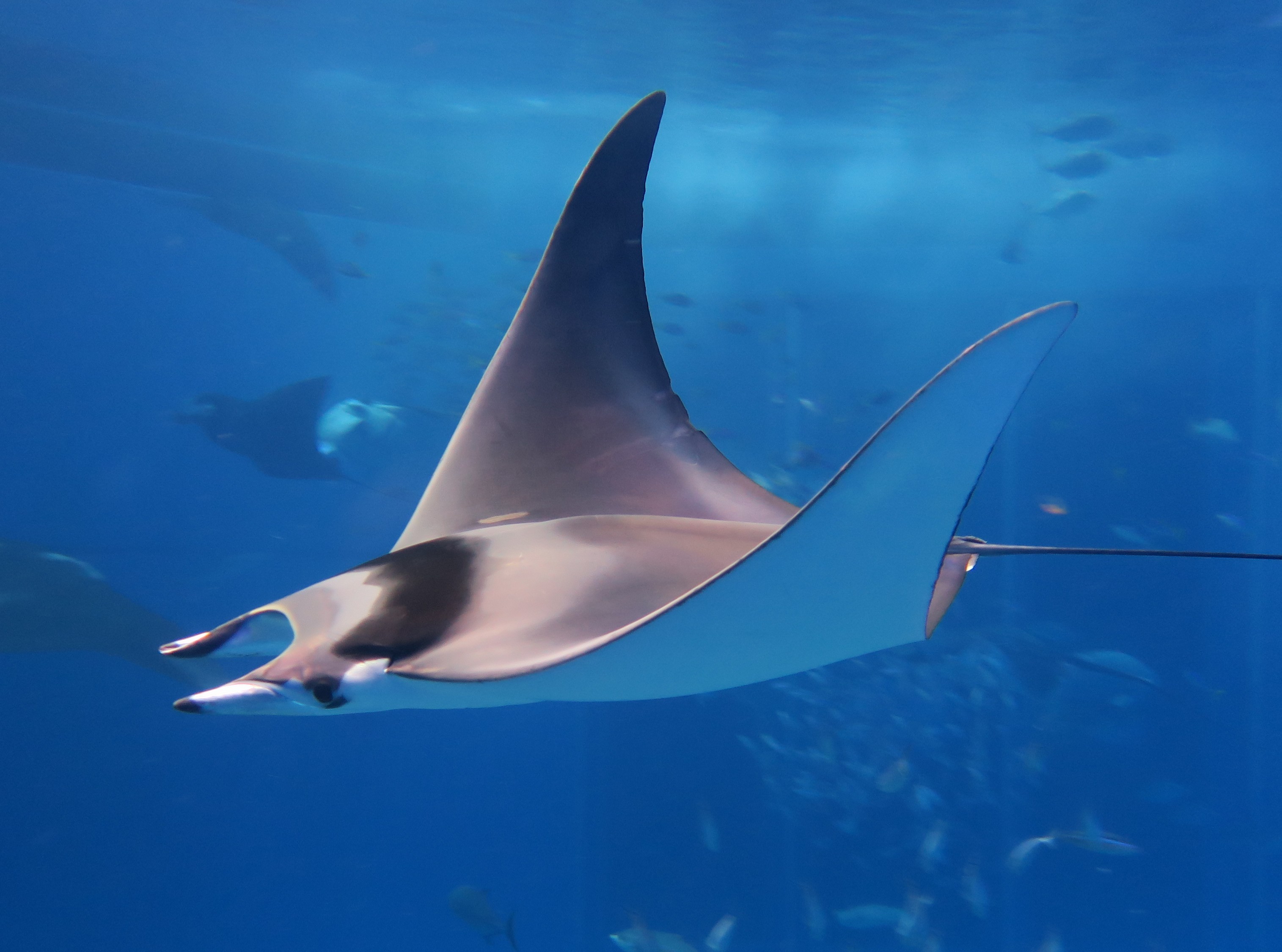
Devilfish, also known as the Giant Pacific Octopus, is one of the most fascinating creatures that inhabit the depths of the oceans. With its eight flexible arms, impressive size, and intelligent nature, the Devilfish captivates the imagination of scientists and animal enthusiasts alike. In this article, we will delve into the incredible world of Devilfish and uncover 20 fascinating facts about these mysterious creatures. From their remarkable hunting techniques and complex communication skills to their incredible ability to camouflage and regrow their limbs, Devilfish are truly remarkable creatures. So, grab your scuba gear and join us as we dive deep into the secrets of the Devilfish!
Key Takeaways:
- Devilfish, also known as Manta Rays, are gentle giants with impressive intelligence and acrobatic abilities. They play a crucial role in marine ecosystems as filter feeders, supporting the balance of plankton populations and sustaining other marine life.
- Devilfish are found in various oceans worldwide, from the tropical waters of the Caribbean to the coastal regions of Australia. They have a unique reproductive process, long lifespan, and are highly migratory, traveling long distances in search of food and suitable breeding grounds.
Devilfish are also known as Manta Rays.
These majestic creatures are part of the ray family and are recognized for their massive size and distinctive diamond-shaped bodies.
Devilfish can reach impressive sizes.
With wingspans that can exceed 20 feet, these creatures can weigh up to 3,000 pounds, making them one of the largest species of ray in the world.
Devilfish are found in both saltwater and freshwater environments.
While they are commonly associated with tropical oceans, some species of devilfish can also be found in rivers and lakes.
Devilfish have unique feeding habits.
These gentle giants primarily feed on plankton and small fish, using their specialized gill rakers to filter feed while swimming through the water.
Devilfish are highly intelligent creatures.
Research has shown that these rays have large brains and demonstrate problem-solving abilities, making them incredibly fascinating creatures to study.
Devilfish have a long lifespan.
These fascinating creatures can live for up to 50 years, allowing them to traverse vast distances and explore different marine habitats during their lifetime.
Devilfish are known for their acrobatic aerial displays.
When swimming near the water’s surface, these rays often breach, leaping out of the water and performing breathtaking somersaults.
Devilfish have a unique reproductive process.
Instead of giving birth to live young, female devilfish produce eggs that hatch internally before giving birth to fully formed miniature rays.
Devilfish communicate using their cephalic fins.
These rays have specialized fins located at the front of their heads, which they use to communicate with each other through various gestures and movements.
Devilfish are gentle and harmless creatures.
Despite their large size, devilfish are completely harmless to humans and have a peaceful nature, making them popular attractions for scuba divers and snorkelers.
Devilfish have a complex social structure.
They often gather in large groups called “fevers,” where they engage in courtship rituals and display intricate mating behaviors.
Devilfish have a global distribution.
These incredible creatures can be found in various oceans around the world, from the tropical waters of the Caribbean to the coastal regions of Australia.
Devilfish have a remarkable ability to regenerate.
If their tails are damaged or injured, devilfish have the ability to regenerate them over time, allowing them to maintain their swimming and maneuvering abilities.
Devilfish are susceptible to pollution and habitat destruction.
Due to their slow reproductive rates and sensitivity to environmental changes, devilfish populations are at risk, making conservation efforts crucial to their survival.
Devilfish use their cephalic fins to help funnel food into their mouths.
These specialized fins act as a guide, directing water and prey towards their mouths as they swim through the water.
Devilfish have a symbiotic relationship with other marine species.
Remoras and cleaner fish often hitch a ride on the backs of devilfish, feeding on parasites and leftover scraps of food, while the ray benefits from the cleaning service.
Devilfish have a unique respiratory system.
Unlike most fish that use gills, devilfish have specialized respiratory gills known as spiracles, which allow them to breathe even when buried in the sand.
Devilfish possess incredible maneuverability.
With their large pectoral fins, these rays can gracefully glide through the water, performing agile movements and stunning displays of grace and agility.
Devilfish are highly migratory creatures.
They are known to travel long distances in search of food and suitable breeding grounds, often crossing entire ocean basins during their migrations.
Devilfish are an important part of marine ecosystems.
As filter feeders, they help maintain the balance of plankton populations, which in turn supports the food chain and sustains other marine life.
Discovering the wonders of these incredible creatures is a remarkable journey. The 20 facts about devilfish outlined here provide just a glimpse into the fascinating world of these magnificent creatures. From their massive size and acrobatic displays to their unique reproductive process and crucial role in marine ecosystems, devilfish continue to captivate researchers, divers, and nature enthusiasts around the world. So, dive in and explore the underwater world to witness the majesty and beauty of the devilfish!
Conclusion
In conclusion, devilfish, also known as manta rays, are fascinating creatures with a myriad of unique characteristics. They are the largest rays in the ocean, known for their graceful movements and impressive wingspan. Devilfish can be found in tropical and subtropical waters across the globe, captivating divers and scientists alike.Their filter-feeding mechanism, which allows them to consume large quantities of plankton and small fish, is both efficient and awe-inspiring. Devilfish have a complex social structure and are highly intelligent creatures, displaying behaviors such as curiosity and problem-solving abilities.Conservation efforts are crucial to protect devilfish populations, as they face threats from habitat loss, pollution, and accidental capture. By promoting sustainable fishing practices and creating marine protected areas, we can ensure the survival of these magnificent creatures for future generations to admire and study.In conclusion, the devilfish is a truly remarkable animal, deserving of our admiration and conservation efforts. Let us continue to explore and appreciate the wonders of our oceans and all the incredible creatures that inhabit them.
FAQs
1. How large can devilfish grow?
Devilfish, or manta rays, can grow up to a staggering 25 feet in width and weigh as much as 3,000 pounds. They are truly colossal creatures!
2. What do devilfish eat?
Devilfish are filter feeders, consuming primarily plankton and small fish. They use their large mouths to scoop up their prey as they glide through the water.
3. Are devilfish dangerous to humans?
No, devilfish are not dangerous to humans. They are gentle creatures and pose no threat to divers or swimmers. In fact, many people enjoy swimming alongside these majestic animals.
4. Do devilfish have any predators?
Devilfish are relatively safe from most predators due to their size and tough skin. However, larger sharks and killer whales may occasionally target them.
5. How long do devilfish live?
The lifespan of devilfish is currently unknown. However, researchers believe they can live up to 50 years or even longer.
6. Are devilfish endangered?
Yes, some species of devilfish, such as the giant manta ray, are considered vulnerable or endangered due to overfishing and habitat destruction. Conservation efforts are crucial to protect these magnificent creatures.
7. Can devilfish be kept in captivity?
Devilfish have been successfully kept in captivity in some aquariums around the world. However, it is important to ensure that their tanks are large enough to accommodate their size and provide them with suitable environmental conditions.
8. Can devilfish communicate with each other?
While devilfish do not communicate in the same way humans do, they have been observed displaying certain social behaviors, such as courtship displays and group feeding. These behaviors suggest a level of communication within their own species.
If you're fascinated by the wonders of marine life, don't miss our captivating articles on the enigmatic reefs of the Gulf of Aqaba, where vibrant marine ecosystems thrive. Dive deeper into the world of intriguing sea creatures like sea anemones, and explore the mysterious realm of cephalopods with our informative piece on squid facts. Each article offers a unique glimpse into the incredible diversity and adaptations of life beneath the waves.
Was this page helpful?
Our commitment to delivering trustworthy and engaging content is at the heart of what we do. Each fact on our site is contributed by real users like you, bringing a wealth of diverse insights and information. To ensure the highest standards of accuracy and reliability, our dedicated editors meticulously review each submission. This process guarantees that the facts we share are not only fascinating but also credible. Trust in our commitment to quality and authenticity as you explore and learn with us.


